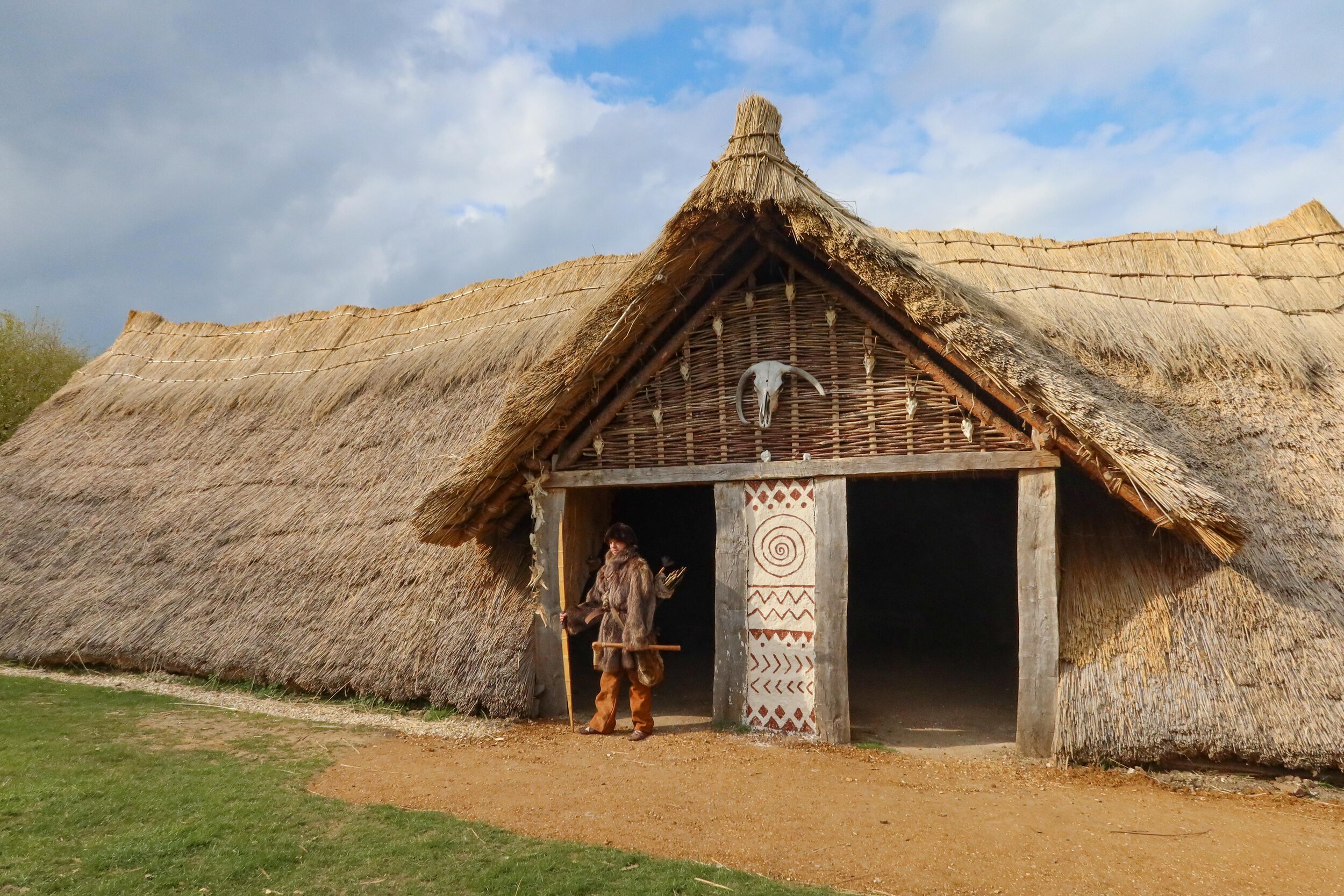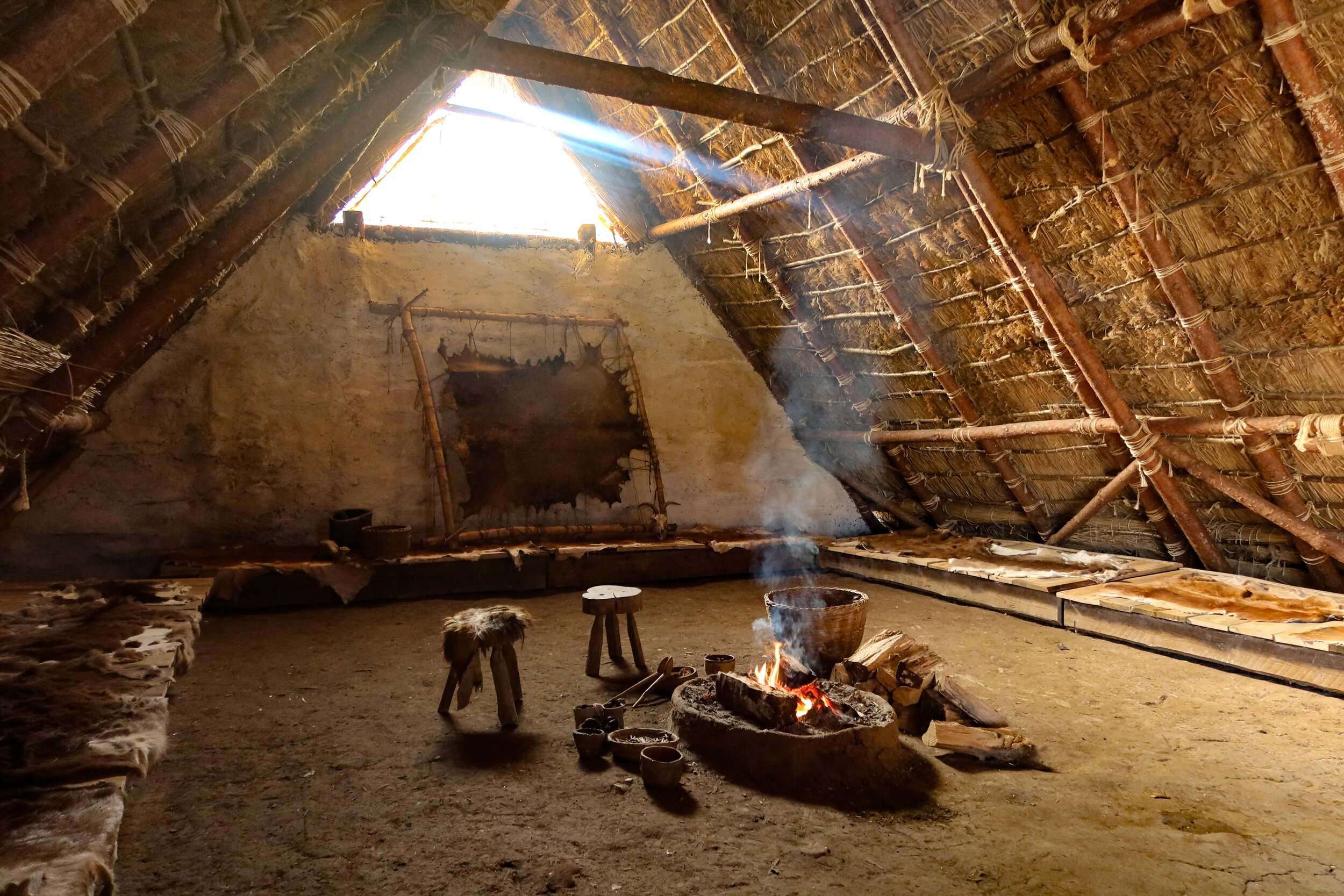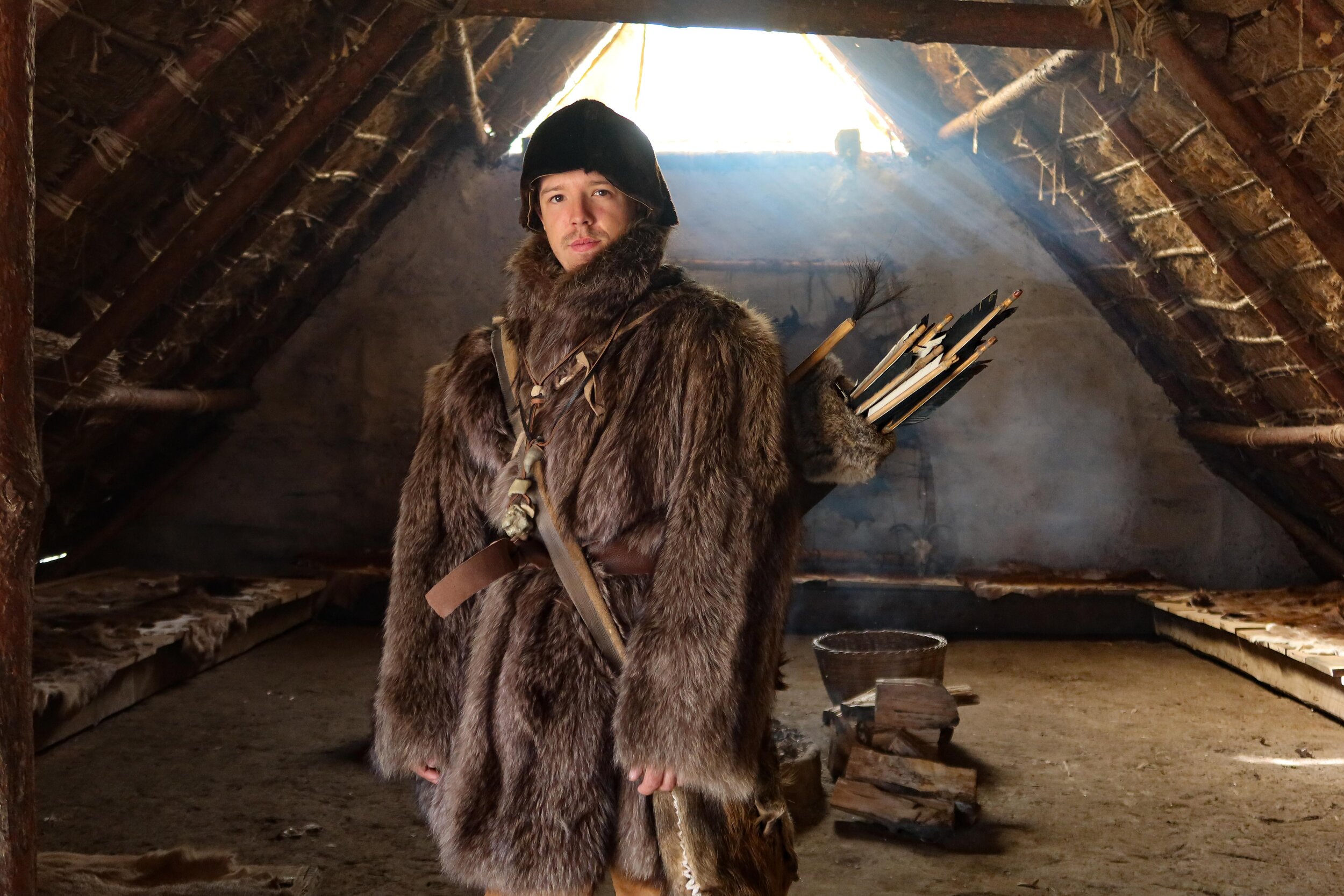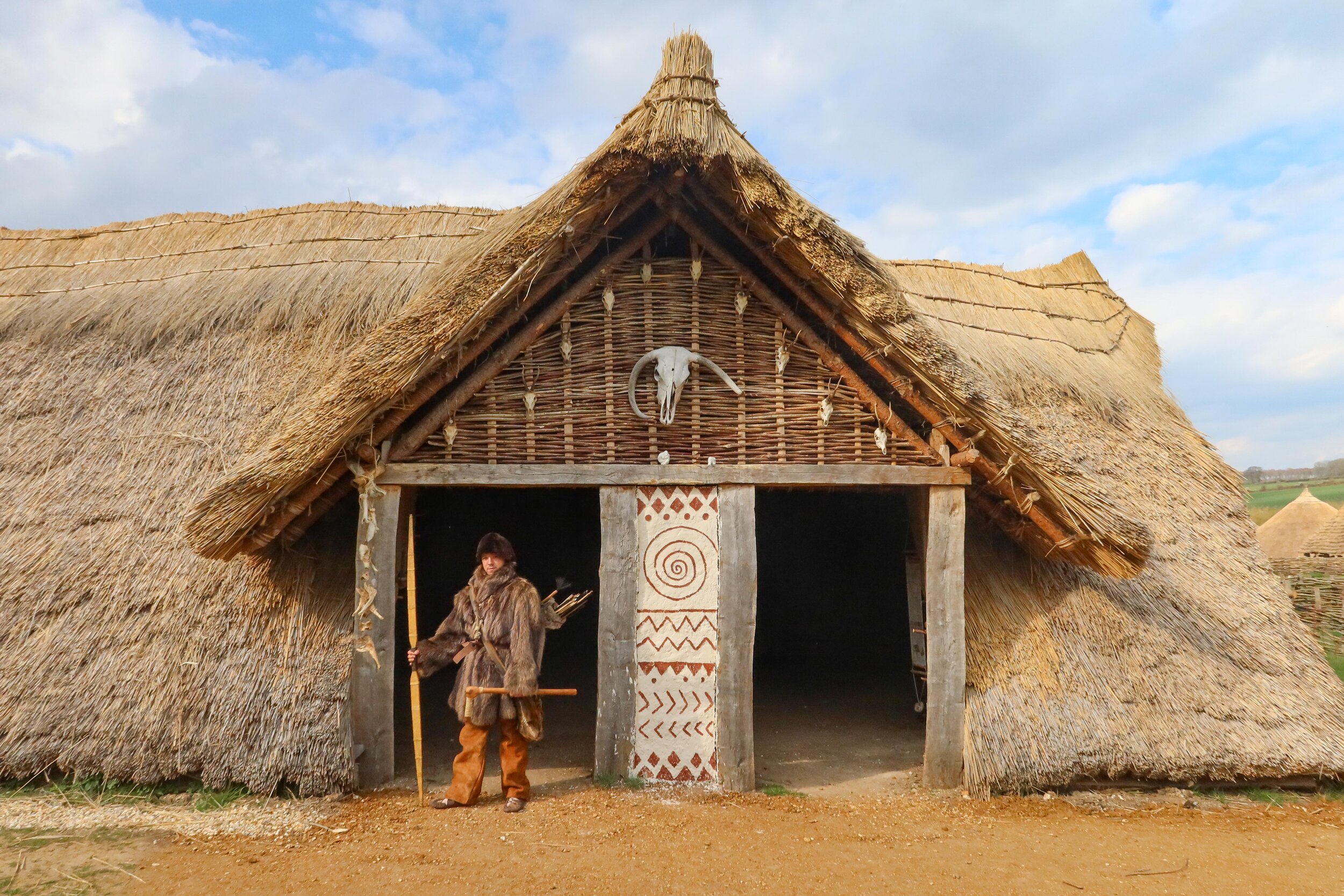Although our updates have been a bit sporadic due to the lockdown we have still been working hard on the finishing touches to our Neolithic Horton House. Here, archaeologist Claire shares the feeling of achievement as our Horton House is completed and we welcome the first visitors to the new house…
At last I am able to announce the completion of our Neolithic house project. In doing so, we will finally be saying goodbye to a construction site, and hello to a new, immersive visitor attraction here at Butser. The emotions this provokes in me aren’t easily defined – a sense of relief, joy or maybe even sadness…..….I suspect there’s a bit of all three.
It is without doubt one of the most challenging construction projects we have taken on here, not least because it really was experimental. Unlike a roundhouse, there was no tried and tested design (thank you Peter Reynolds) nor a prescribed method of construction and erection. But of course like many, we were also faced with the additional challenges of working whilst following the government’s COVID restrictions and guidelines. From furlough to social distancing, through a scorching summer and a long, dark, lonely winter, with the stress of closures and re-openings we’ve battled on and in the end, I truly believe we have triumphed.
Everyone who has been involved in helping to construct it now has an emotional connection to this building, all seven tons of Scots pine, six tons of thatch, the mile of thatching twine and the sheer monumental scale of it.
Once a colleague turned to me having spent many hours working on the house. With a Neolithic knife cradled in his hand and his eyes glassy with emotion, he said, pointing to the house:
“A piece of you is in that. The more you invest, the more you are invested in that building”.
His heartfelt observation was one of those rare moments of illumination, shining a light into the darkness of the past. That shared experience and emotional engagement with our ancestors was just as precious as all the material traces left behind in the archaeological record.
Of course, the whole experience wasn’t some kind of pseudo-séance with the Neolithic builders of this structure. Along the way we discovered the answer to lots of practical questions, and satisfied our curiosity about many things, whether that be how well a bone chisel worked ( an hour and a half to core right through a 5 inch diameter Scots pine pole, seeing as you ask) to how successful our flint axe was at shaping timbers (surprisingly efficient). In the absence of that séance, there’s one question which will have to remain unanswered however, and that’s whether the original Neolithic inhabitants of this house would have approved of our efforts. Why not come to Butser Ancient Farm to see the Horton house, have an immersive Neolithic experience and decide for yourself?
A huge thank you to everyone who has been involved in the Horton House project.
Continue reading below to find out more information about the construction…



Background to the Horton House
The Horton House is a reconstruction of a Neolithic building based on a discovery made at Kingsmead Quarry near Horton in Berkshire in 2012 by Wessex Archaeology. The original house is believed to date to 3800-3600 BC. There is remarkably little evidence for Neolithic housing in the UK so this was a particularly exciting discovery as it was the largest of four houses discovered at the same site.
Horton House is unusually large for this time period; the Neolithic or late Stone Age. It measures approximately 15 metres in length by 7.5 metres in width. Its widest point is the middle, tapering towards each end like a trapezoid. On excavation, the footprint of the house could clearly be seen, revealing a large structure with a series of post holes and slot or foundation trenches.
From this evidence, working closely with the original excavation team from Wessex Archaeology we have designed and constructed one interpretation of the finds made. It is of course feasible that there could be other possibilities.
The main features of the Horton House:
The evidence revealed 6 post holes – remarkably few for such a large building, creating an exciting challenge for our experimental archaeologists here on site.
It appears to be divided internally into two ‘cells’. We don’t know how this influenced the use of space internally. Although there is no direct evidence, it is possible that animals were stalled at one end.
The archaeology suggests a possible double entrance on the South East end of the building. We’ve speculated that one door could have provided access to an animal stall whilst the other led to domestic living space.
With no trace of a floor surface or hearth for a fire we’ve chosen to have a simple beaten earth floor and a clay hearth – both frequently recorded in archaeological excavations of prehistoric houses.
The roofing material is water reed, in this case imported from Turkey because the tradition of managing reed beds for thatch has been abandoned here in the UK.
We calculated that the reed roof must have pitch of at least 45 degrees – any shallower and the thatch would rot. An increased pitch would provide no functional advantage and would just use up more material resources. It was this that partly dictated the design of the building. The weight of a roof this size on a timber wall would have been enormous. Our design enables the roofing timbers to double as the walls of the house, with oak planking acting as infill at the base, in line with the archaeological evidence.
Horton House Facts and Figures from the build…
15 m x 7.5 m, trapezoidal shaped structure
6 post holes and slot or foundation trenches possibly suggesting oak planks
Oak, Scots Pine, hazel and ash all used in its construction.
5 to 6 tons of thatch
1.5km of thatching twine
2.7km of twine attaching the battens to the roof structure.
950m of rope used to lash the large timber joints together.


